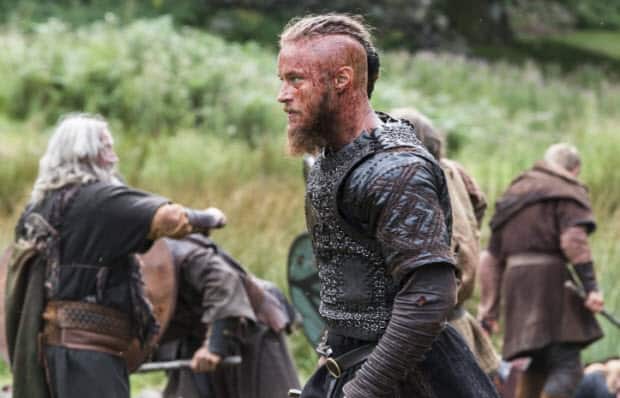
Vikings is no joke. Just in time for the announcement of a third-season renewal, “Answers in Blood” plants a firm step and presents a good argument as to why this series deserves to be considered among the better ones airing right now. Though Hannibal and The Americans are both putting together stellar second seasons, there is something special about this year of Vikings in that I don’t think anyone expected it to be quite this good. Everything from the character development to the staging and choreography is vastly improved from last year’s mostly average first season. “Answers in Blood” is now the second legitimately great entry of the season and is one heck of a way to finish the first half of these ten episodes.
There’s so much to talk about here, but each new episode of Vikings I watch, I realize that I keep forgetting to mention the color palette in these reviews. When getting a show’s tone down, visual and aural aesthetics are the easiest building blocks. It’s certainly possible to evoke tone mostly through dialog and the performances of the actors, but that’s trickier and leaves more room for mistranslation. “Coloring” a show in a certain way via tints and which colors the camera chooses to highlight or mute is a more obvious route to establishing tone, and it’s one that Vikings uses not because it’s easy but because the series is one that tends to linger on its surroundings often. When Borg rides out to track the people who burned his supplies, we see the grey landscape in all its subdued glory, which not only helps create that cold feeling but emphasizes how minimalist Vikings is overall. It’s stripped down, for the most part, and rather than having the natural foliage or even something like Lagertha’s hair pop, the cinematography here is all about maintaining that consistency in tone.
That scene, simply put, is amazing. Again, I’m impressed by how Vikings can put together a battle with so few bodies (relative to other big set pieces we see in other shows) that has the same epic feel as something like Game of Thrones. It helps when we get slower shots of Borg and Ragnar stalking each other from behind their troops’ lines, but even when it’s in full-action mode, Vikings gets every piece right. There’s an almost indescribable (almost, otherwise you wouldn’t be reading this) quality of satisfaction in seeing Ragnar, Rollo, Bjorn and Lagertha on the battlefield together for the first time. In the aftermath, of course, Ragnar has to show some petty disappointment for his son, since coming to his aid might have been the difference between felling Borg now versus later. But before that idea is introduced, the family unit is in total sync and represents a real force to be reckoned with. It’s a big reason why we’ll have so much sympathy for Lagertha later in the episode–Aslaug accurately points out that the draw there for Ragnar is that Lagertha is a shieldmaiden and a true warrior–and why there’s extra warm feelings in retrospect for Bjorn and Rollo’s reunion after the younger Bjorn only knew his uncle as someone less than wholly admirable.
For an episode that’s full of some pretty violent acts, “Answers in Blood” is almost cathartic. Seeing not just the reunion of the Lothbrok clan but the return to Kattegat makes the payoff to this mini Borg arc land effectively. The people still remember and love Lagertha, which causing her departure at the episode’s end to be all the more heartbreaking. Yet, it’s understandable. “Everything is new, now,” Bjorn tells his uncle earlier in the episode. An idea like this might suggest that Lagertha could begin anew in Kattegat, away from her violent husband. Rollo, though, makes a good counterpoint to the idea of something being new: “I am like a snake who just shed its skin. The pattern is just the same. But the snake is new.” So, even if people can become different versions of themselves, like Rollo has (and much to benefit of the season), the old pattern or outline is still there. Lagertha will probably never be someone who can stay in Kattegat with Ragnar while Aslaug is in the picture, even if she’s shed a layer of skin that allows her to experience two-sided forgiveness and give permission for Bjorn to stay. I don’t think calling Bjorn the only thing she has left was meant as a dig at Ragnar, but Lagertha has proven again just how strong she is as a character and why Katheryn Winnick is such a huge and essential part of this series.
No less essential–thematically, at least–is Athelstan. Bad news travels slower than good news, and it’s not until late in the episode that Ragnar learns of what’s happened back in England. We get to spend most of the episode going back and forth between the two stories, though. It feels like Vikings is trying to create a circumstance that will make the reunion between Athelstan and Ragnar more complicated than it ought to be, perhaps because of Athelstan being seduced back to some idea of faith. However, there are several scenes in “Answers in Blood” that challenge that notion. Athelstan removes the wafer from his mouth during service and he sees some kind of vision of a demon in one of Vikings‘ most surreal and horrific scenes (the thing is all teeth, looking a lot like a Langolier). What interests me most about Athelstan’s scenes is that conflict between who he once was and who he is now as a pagan. Before the demon comes to him, he prays for his god to come back to him. He actually uses the word “ravish,” which immediately evoked one of John Donne’s more famous Holy Sonnets for me: “Take me to you, imprison me, for I, / Except you enthrall me, never shall be free, / Nor ever chaste, except you ravish me.” The connotations have always been of interest for Donne scholars, and Donne himself is an interesting parallel to Athelstan in that the poet lived two very different lives, first as a young ladies man of sorts before giving himself more fully to his religious upbringing and teachings. It makes sense that Athelstan would need that type of aggressive appeal from his god to make the conversion back over and to forget everything he’s learned to believe under Ragnar’s influence. Instead of being visited by some type of holy entity, though, he gets the demon. Of course, he also sees the mother Mary in the figure of the woman he helps in court, which only further complicates what he should be putting his faith into. So, as Ragnar finds himself fighting a war on two fronts physically, Athelstan is across the sea fighting one that’s more psychological. I expect both to be resolved by the end of the season, but I wish there were a few more episodes through which to explore them more fully.
[Photo via Jonathan Hession/History]
 Follow Us
Follow Us
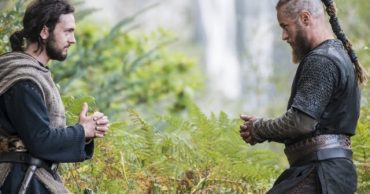
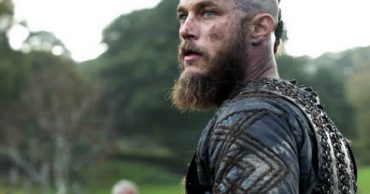

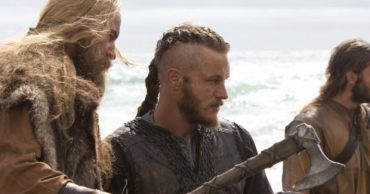

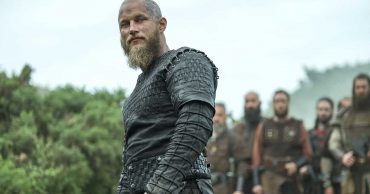
The historical presentation of Christianity along with the representation of the Christian life in this series has been very weak. Clearly some good research and details regarding Viking culture, but crucifixion being used by the Anglo-Saxons for apostates, the altar facing the people, the attitude of church leadership is sadly not representative of this period.
These are all good points that I, unfortunately, have very little knowledge about. Just out of curiosity, does historical inaccuracy have a big effect for you when watching something? I wonder if it was an area that I knew really well if it would bother me. For the most part, I tend not to let it bug me.
I was just talking with a few folks yesterday and the series came up. Someone mentioned that the use of stirrups was disappointing, while another else commented on the inaccurate percentage of women taking part of voyages, so I would say to a certain percentage of viewers, it is just a disappointment. My background includes military studies of this period along with early Western Christian history and ritual. No doubt that some things have to be added in order to appeal to a wider audience, but the presentation of Christianity in Anglo-Saxon England in the series does concern me. The Anglo-Saxon Church and its truth, depth and beauty overcame the shallow Norse gods and superstitions as Ragnar’s interest in all things Christian seems to portray.